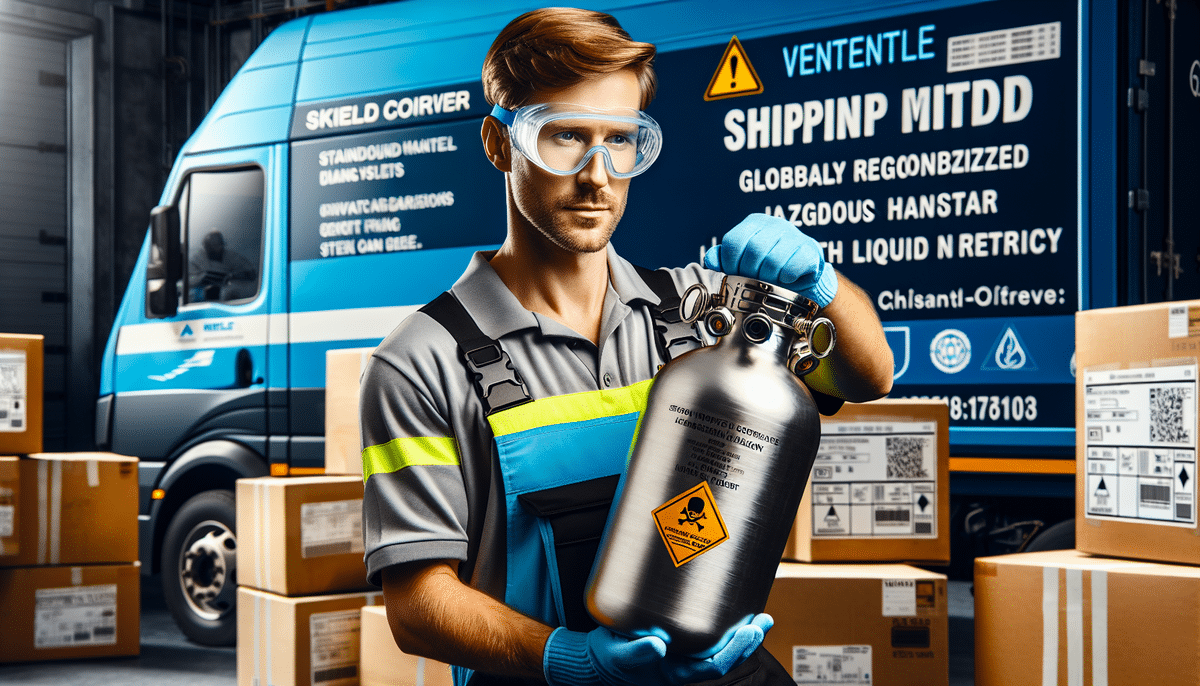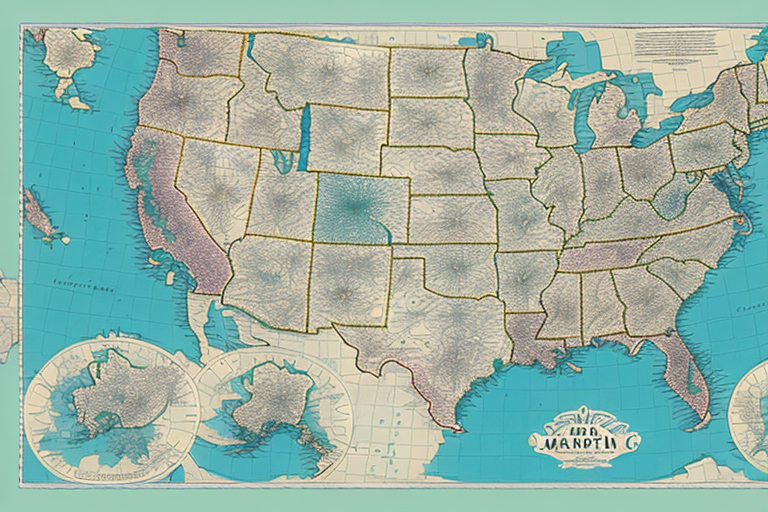Understanding the Risks of Shipping Liquid Nitrogen
Shipping items containing liquid nitrogen involves significant risks due to its cryogenic nature. Liquid nitrogen has an extremely low boiling point of -196°C (-321°F), making it a potent cryogenic liquid that poses hazards such as severe cold burns, frostbite, and asphyxiation if mishandled. According to the Occupational Safety and Health Administration (OSHA), proper handling and storage protocols are essential to mitigate these risks.
Potential Health Hazards
Exposure to liquid nitrogen can cause immediate frostbite upon contact with skin or eyes. Additionally, in confined or poorly ventilated spaces, liquid nitrogen can displace oxygen, leading to asphyxiation. The Centers for Disease Control and Prevention (CDC) emphasize the importance of adequate ventilation when transporting cryogenic liquids to prevent oxygen displacement.
Regulatory Compliance
Liquid nitrogen is classified as a hazardous material under the Pipeline and Hazardous Materials Safety Administration (PHMSA) regulations. Compliance with these regulations is mandatory to ensure safe and legal transportation. Non-compliance can result in severe penalties, including substantial fines and legal action.
FedEx’s Guidelines for Shipping Liquid Nitrogen
FedEx provides detailed guidelines to ensure the safe transportation of items containing liquid nitrogen. These guidelines align with federal regulations and industry best practices to safeguard both the shipment and those handling it.
Comprehensive Packaging Requirements
FedEx mandates the use of specialized packaging materials designed to withstand cryogenic temperatures. This includes insulated containers such as Dewar flasks, which are essential for maintaining the integrity of liquid nitrogen during transit.
Proper Labeling and Documentation
All shipments containing liquid nitrogen must be clearly labeled as hazardous materials. This includes specific hazard warning labels and comprehensive documentation detailing the contents, quantity, and handling instructions. Accurate labeling ensures that all parties involved in the transport process are aware of the potential hazards.
Packaging Requirements for Liquid Nitrogen Shipments
Effective packaging is crucial for the safe transportation of liquid nitrogen. The packaging must prevent leaks, withstand extreme temperatures, and allow for proper ventilation.
Insulated Containers
Using a Dewar flask made of stainless steel is recommended for shipping liquid nitrogen. These containers are engineered to store cryogenic liquids and are equipped with venting systems to manage gas expansion safely.
Leak-Proof and Durable Materials
The packaging should be constructed from materials that are both leak-proof and durable, capable of withstanding physical damage during handling and transit. Multi-layered packaging systems are often employed to provide additional protection.
Ventilation Systems
Proper ventilation is essential to prevent the build-up of nitrogen gas, which can displace oxygen and create an asphyxiation hazard. Packaging must include venting mechanisms to allow gas escape, complying with PHMSA regulations.
Labeling and Documentation
Accurate labeling and thorough documentation are fundamental components of shipping liquid nitrogen safely.
Hazard Labels
Packages containing liquid nitrogen must display appropriate hazard labels, such as the Minor Hazard or Dangerous Goods labels, depending on the quantity being shipped. These labels alert handlers to the presence of hazardous materials and the associated risks.
Shipping Documentation
Complete and accurate shipping documents must accompany the package. This includes a Material Safety Data Sheet (MSDS) and any necessary permits or certifications required by federal regulations. Proper documentation facilitates compliance with legal standards and ensures safe handling during transportation.
Best Practices for Handling and Transporting Liquid Nitrogen
Adhering to best practices is essential for the safe handling and transportation of liquid nitrogen.
Personal Protective Equipment (PPE)
All personnel involved in the handling and shipping of liquid nitrogen should wear appropriate PPE, including insulated gloves, safety goggles, and protective clothing. PPE minimizes the risk of frostbite and other injuries.
Training and Education
Comprehensive training programs should be implemented to educate employees on the hazards of liquid nitrogen and the proper procedures for handling and shipping. According to the OSHA, trained personnel are less likely to make errors that could lead to accidents.
Secure Storage and Transportation
Liquid nitrogen must be stored in well-ventilated areas away from sources of ignition. During transportation, containers should be securely fastened to prevent movement and potential spills.
Choosing the Right Shipping Service
Selecting a reputable shipping service is critical when transporting hazardous materials like liquid nitrogen. The chosen carrier should have extensive experience and a proven safety record in handling cryogenic liquids.
Carrier Expertise
Ensure that the shipping service is certified to transport hazardous materials and complies with all relevant regulations. Experienced carriers are better equipped to manage the unique challenges associated with shipping liquid nitrogen.
Safety Record
Review the carrier’s safety history and compliance record. A carrier with a strong safety track record is more likely to adhere to best practices and regulatory requirements, reducing the risk of accidents during transit.
Responding to Accidents or Spills During Shipping
Even with stringent precautions, accidents and spills can occur during the shipping of liquid nitrogen. Preparedness is key to minimizing potential harm.
Emergency Response Plan
Develop a comprehensive emergency response plan that outlines the steps to take in the event of a spill or accident. This should include immediate containment procedures, evacuation protocols, and communication strategies to alert relevant authorities.
Containment and Cleanup
In the event of a spill, swiftly contain the liquid nitrogen to prevent further leakage. Follow established cleanup procedures to safely manage and dispose of the spilled material, adhering to Environmental Protection Agency (EPA) guidelines.
Reporting and Documentation
Accidents and spills must be reported to the appropriate regulatory bodies in accordance with federal and state laws. Accurate documentation of the incident is essential for legal compliance and future preventative measures.
Conclusion
Shipping items containing liquid nitrogen requires meticulous adherence to safety guidelines, regulatory compliance, and best practices. By understanding the risks, implementing proper packaging and labeling, choosing a reliable shipping service, and preparing for potential emergencies, shippers can ensure the safe and efficient transport of liquid nitrogen. For further information on shipping hazardous materials, refer to the FedEx Hazardous Materials Guide or consult with a certified hazardous materials expert.




















